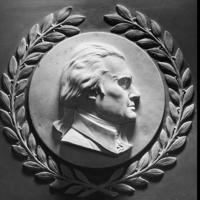
Cultured American
The channel focuses on Traditional America as opposed to the cosmopolitan intelligentsia society.
إظهار المزيد422
المشتركون
لا توجد بيانات24 ساعات
+127 أيام
+4530 أيام
- المشتركون
- التغطية البريدية
- ER - نسبة المشاركة
جاري تحميل البيانات...
معدل نمو المشترك
جاري تحميل البيانات...
Photo unavailableShow in Telegram
Myth About King George III
King George III opposed their bid for independence to the end, but he did not develop the policies, such as the Stamp Act of 1765 and the Townshend duties of 1767 on tea, paper and other products, which led to war in 1775-76 and which had the support of Parliament.
These policies were largely due to the financial burdens of garrisoning and administering the vast expansion of territory brought under the British Crown in America, the costs of a series of wars with France and Spain in North America, and the loans given to the East India Company (then responsible for administering India).
By the 1770s, and at a time when there was no income tax, the national debt required an annual revenue of £4 million to service it.
Photo unavailableShow in Telegram
Queen Elizabeth I and the Execution of Queen Mary of Scotland
Mary was also a temptation for potential invaders such as Philip II. In a letter of 1586 to Mary, Elizabeth wrote, 'You have planned ... to take my life and ruin my kingdom ... I never proceeded so harshly against you.' Despite Elizabeth's reluctance to take drastic action, on the insistence of Parliament and her advisers, Mary was tried, found guilty and executed in 1587.
Photo unavailableShow in Telegram
Catholic Threats to Queen Elizabeth's Reign
However, Elizabeth's reign was one of considerable danger and difficulty for many, with threats of invasion from Spain through Ireland, and from France through Scotland. Much of northern England was in rebellion in 1569-70. A papal bull of 1570 specifically released Elizabeth's subjects from their allegiance, and she passed harsh laws against Roman Catholics after plots against her life were discovered.
One such plot involved Mary, Queen of Scots, who had fled to England in 1568 after her second husband, Henry, Lord Darnley's, murder and her subsequent marriage to a man believed to have been involved in his murder, James, Earl of Bothwell.
As a likely successor to Elizabeth, Mary spent 19 years as Elizabeth's prisoner because Mary was the focus for rebellion and possible assassination plots, such as the Babington Plot of 1586.
Photo unavailableShow in Telegram
John Adams' Interaction with King George III
King George III met John Adams in London in June 1785, he told him, “I will be very frank with you. I was the last to consent to the separation [between England and the colonies]; but the separation having been made, and having become inevitable, I have always said, and I say now, that I would be the first to meet the friendship of the United States as an independent power.”
Photo unavailableShow in Telegram
Richard Henry Pratt was opposed to the segregation of Native American tribes on reservations, believing that it made them vulnerable to speculators and people who would take advantage of them. He came into conflict with the Indian Bureau and other government officials who supported the reservation system, as well as all those who made profits from them.
In May 1904, Pratt denounced the Indian Bureau and the reservation system as a hindrance to the civilization and assimilation of Native Americans. This controversy, coupled with earlier disputes with the government over civil service reform, led to Pratt's forced retirement as superintendent of the Carlisle School on June 30, 1904.
Photo unavailableShow in Telegram
Richard Henry Pratt was outspoken and a leading member of what was called the "Friends of the Indian" movement at the end of the 19th century. He believed in the noble cause of civilizing Native Americans. He said, "The Indians need the chances of participation you have had and they will just as easily become useful citizens."
But Pratt regarded Native Americans as worthy of respect and help, and capable of full participation in society. Many of his contemporaries regarded Native Americans as nearly subhuman, who could never be part of mainstream American society.
Photo unavailableShow in Telegram
Richard Henry Pratt instituted a practice of Americanization of Native Americans by cultural assimilation, which he effected both at Fort Marion and Carlisle. He believed that to claim their rightful place as American citizens, Native Americans needed to renounce their tribal way of life, convert to Christianity, abandon their reservations, and seek education and employment among the "best classes" of Americans. In his writings he described his belief that the government must "kill the Indian...to save the man"
Photo unavailableShow in Telegram
President Theodore Roosevelt supported sterilization of incarcerated individuals and people with cognitive disabilities
Photo unavailableShow in Telegram
This 1921 cartoon advocates for an immigration quota system, depicting a funnel with the large end labeled "Europe" and the small end opening into "U.S.A." and labeled "3%."
Photo unavailableShow in Telegram
An Exhibit of the American Eugenics Society at the Sesquicentennial Exposition in Philadelphia, 1926
اختر خطة مختلفة
تسمح خطتك الحالية بتحليلات لما لا يزيد عن 5 قنوات. للحصول على المزيد، يُرجى اختيار خطة مختلفة.
